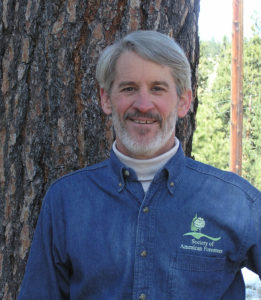This week, we have a story focused a new organization called the North American Forest Partnership. With the goal of full transparency, I want to let you know that I was involved in the development of the partnership as a contractor for the Forest Business Network and for the past eight-plus months as an unpaid volunteer, because I believe the goals of the partnership are laudable.

Matt Blois’ article explores this partnership, and the similarities and differences from other trade or business sectors that develop promotional campaigns. One difference is that it has members who have litigated against each other at times in the past and potentially could again in the future, so there are built-in tensions.
However, the members have come together because they see common ground AND they see that their individual organizations have important values and purposes that serve society through very different methods. A publicly traded timberland company is focused on wood production to meet societal demands for renewable wood products, while publicly owned wilderness areas preclude all harvest and serve society’s needs for wild areas – places that feed the soul, and provide space for natural disturbances such as fire, hurricanes and ice storms to proceed unaltered so we can learn from those processes. Conservation organizations, family forest owners and academics have goals that run the gamut between these. The NAFP recognizes the legitimacy and celebrates all of these different forests.
Can this partnership achieve its goals of communicating these common values and at times exploring their differences? Only time will tell. We at Treesource think this is an important story that focuses strongly on the social leg of the sustainability stool. Our current capital “P” political world in the United States is polarized and operating in a mode of, “if you’re not with me, you’re against me.” NAFP is attempting to break that mold.
I find this NAFP effort similar to the local collaborative groups that have formed across the country looking to find solutions that meet a variety of wants and needs. These efforts value the hard work of listening to other perspectives, understanding their merits and then articulating your own perspectives and recognizing there is value to all of them, then working to find common ground or compromises. Some view compromise as selling out, but in a democratic society I believe it is the attempt to find solutions for the greatest good. An oft-repeated phrase, “democracy the worst form of government except for all the others,” comes to my mind when I hear such critics.
Treesource will have an edition dedicated to collaborative forestry in the coming months. This fundamental democratic process of self-government has been lost in much of the national and state “P” political arenas. I think there is much for the politicians to learn from these efforts and things they can do to empower them, “in order to form a more perfect union.”
I hope that NAFP’s effort to engage the public through the diversity of their current membership and future expansion can help demonstrate the value of having a sawmill manager advocating for wilderness and the wilderness supporter advocating for sustainable wood production. I wish them success in their endeavor, as I think it is an important step toward the goal of a sustainable society and the role forests have in it. Treesource plans to be here to report on the successes and/or failures along the way. We appreciate you joining us on the journey.
Dave Atkins, President and CEO

Leave a Reply